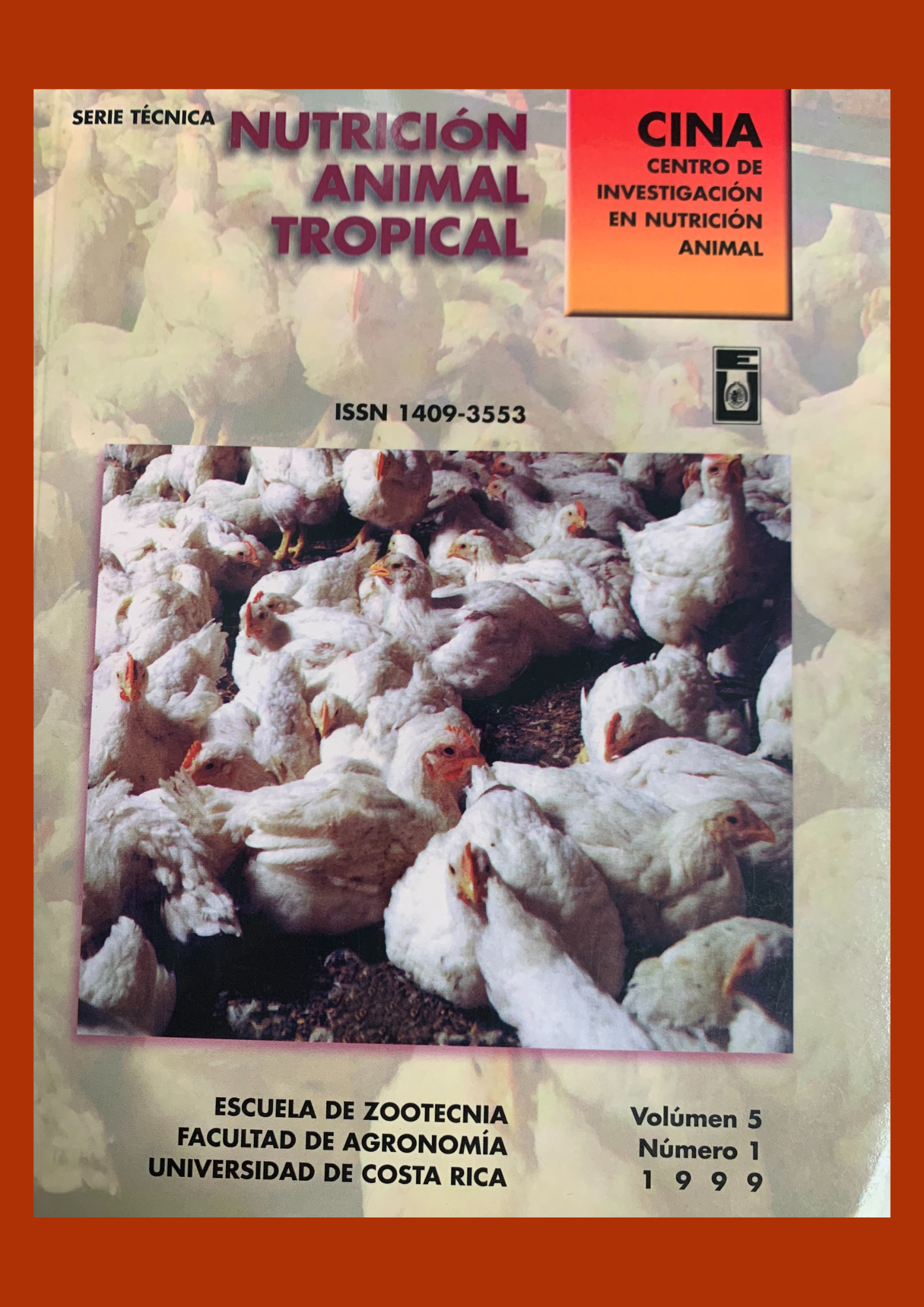Abstract
Estimated nutritive quality of forages in the San Carlos County. Costa Rica. III. Energy for milk production. A total of 192 hand plucked samples of Cynodon nlemfuensis, Setaria anceps var White, Setaria anceps var Purple, Brachiaria ruziziensis, Pennisetum clandestinum and Pennisetum purpureum x Pennisetum typhoides were taken in the Quesada District, San Carlos County during a year, in order to estimate its energy content. Samples were taken in dairy farms in paddocks before grazing. Stage of maturity of. Setaria anceps, Brachiaria ruziziensis and Pennisetum clandestinum ranged frorn26 to 30 days; meanwhile two sampling ages were established for Cynodon nlemfuensis, one from 20 to 25 days and the other from 26 to 30. King Crass (Pennisetum purpureum x Pennisetum typhoides) was harvested at a stage of maturity of 50 to 60 days. The Quesada District is located in the humid tropics of Costa Rica at an altitude ranging from 200 to 1600 masl. Average temperature in the area is 23'C and annual average rainfall is 4577 mm. Samples were taken during the semidry (January-April) and rainy seasons (May-December). Total digestible nutrients were estimated via the mathematical model proposed by Weiss et al. (1992). Contents of digestible, metabolizable and net energy for lactation were also estimated utilizing standard NRC (1989) procedures. Significant differences were found among grass species and seasons of the year for all energy expressions. The mean values of total digestible nutrients for Cynodon nlemfuensis sampled at a stage of maturity of 20 to 25 days, Cynodon nlemfuensis harvested at26 to 30 days, Setaria anceps var White, Setaria anceps var Purple, Brachiaria ruziziensis, Pennisetum clandestinum and Pennisetum purpureum x Pennisetum typhoides were 54.7,53.6,56.2,52.8, 53.7,56.7 and 47.8, respectively. Average contents of digestible energy, metabolizable energy and net energy for lactation for all grazing species were 2.41, 2.04 and7.25Mcal/ kg of DM, meanwhile, values for the King Grass were 2.1L,1.75 and 1.09 Mcal/ kg of DM, respectively. If availability and intake of grazing species is adequate, energy content of these grasses meet the requirements of the average cow ir the zone to produce from 6.3 to 7.8 kg of milk with 3.5% of fat per day. Results show that energy is the most limiting nutrient for milk production in the Quesada District. Therefore, grain mixtures formulated for dairy herds in the area should be high in energy (more than 3.2 Mcal of digestible energy / kg of DM). This being particularly important for cows in the first 150 days of lactation.

